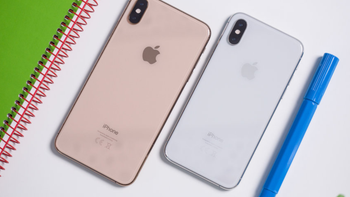Apple devices could someday save your life by smelling your sweat

Continuing with its emphasis on health, Apple has filed a couple of patents with the U.S. Patent and Trademark Office (via AppleInsider) related to technology that could keep iPhone and Apple Watch users healthy. The first patent application, titled "Compact Particulate Material Sensor," would allow an Apple device to "smell" for pollutants in the air that cannot be clearly detected by the human eye. These particles could be inhaled by humans, leading to respiratory distress.
Apple says that it could equip a device with a compact particulate material sensor that would be able to detect light from dust particles. At the same time, it will be able to ignore ambient light from the sun and from a bulb. The sensor could be integrated into the back of a handset near an iPhone's camera. It would emit a pulsing light at a particular wavelength in order to discover the pollutants. Existing dust particle detectors use infrared light bounced off air blown into a dark tunnel to help find these small particles. This obviously doesn't sound like something that could be added to a mobile device. Apple also notes that these devices have "a number of shortcomings."
The second patent application is titled "Systems and Methods for Environment Sensing," and features technology that could be used to detect chemicals in the air. Sensors on an iPhone or Apple Watch would sense "a smell associated with a chemical species." An Artifical Intelligence (AI) engine would be used to recognize various smells. For example, carbon monoxide is an odorless gas that can kill people in enclosed spaces. Receiving an alert from an iPhone or Apple Watch could save lives. In fact, the Center for Disease Control (CDC) says that 430 Americans are killed each year from carbon monoxide poisoning. If a person were to receive such a warning, he or she could quickly leave and move to an outdoor location in time.
An Apple device could save a user's life by smelling his sweat
According to Apple, the technology in this patent can be used to measure compounds in human sweat. Believe it or not, with this information literally dripping off an iPhone or Apple Watch user, the sensors can detect whether this person has high or low blood sugar. A person with the latter could feel light headed and dizzy and might be in danger of passing out. The remedy is actually simple; eating a chocolate bar or drinking a non-diet soda, both laden with sugar, will raise the person's blood sugar and take him or her out of danger. But self-diagnosing this isn't always easy. To most people, this isn't the first thing that comes to mind when they feel light headed. In this scenario, an early warning notification from a mobile device could be useful.
Those whose sweat produces a high blood sugar notification on the iPhone or Apple Watch are quite possibly diabetic. They would have to visit their doctor to be properly diagnosed. If a diabetic receives a high blood sugar notification, he or she would have to get a more precise reading using their glucometer. After obtaining that data, the diabetic might then have to administer an injection of insulin.
Both patents were submitted at the same time last September. Apple files a number of patents each year, but only a small percentage of these ever wind up being used in an Apple device.
You can check out a number of images from both patent applications by clicking on the slideshow below.










Things that are NOT allowed: